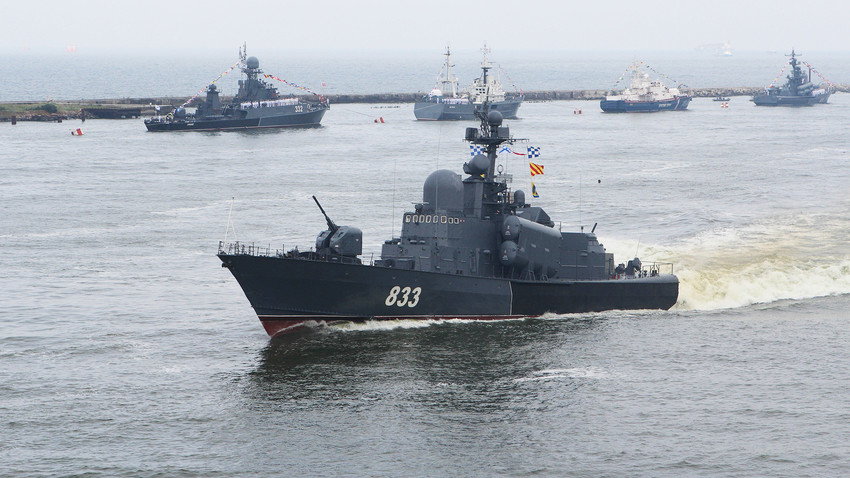
A Project 1241 Molniya missile corvette during the final rehearsal of the parade to mark the Navy Day in Baltiysk.
Igor Zarembo/SputnikBy 2019 Russia’s military will receive two Soviet-era missile corvettes from the 1241 “Flash” (aka “
The pair of
The main differences between the massive Soviet missile corvette of the 80s and the modern version are their architecture and weaponry.
First of all, designers have improved the living conditions of the crew. And secondly, the aged Soviet weapon systems have been replaced with modern X-35U anti-ship missiles and a sea version of the notorious Patnsir-S1 anti-air defense system – the Pantsir-M.
Pantsir-M is
The sea version will even be able to intercept missiles during heavy pitching and storms. It will also be more compact compared to the land version and will be covered with an anticorrosive sheath for longevity. What’s more, it will be able to track and shoot down up to four aerial and above-water targets at the same time with 30-mm rounds and missiles.
The fire rate of Pantsir-M is also impressive. It shoots 160 artillery shells per second: That’s up to 9,600 shots a minute.
“The ‘Pantsir-M’ creates a 20-km anti-aircraft dome around the ship it’s installed on. That makes it an effective defense weapon in any potential conflict of the future,” CEO of High Precision Systems that creates Pantsir-M, Alexander Denisov told Russia Beyond.
Alongside a new air defense system, the missile corvettes will receive missile launch systems with eight X-35U rockets on board. These missiles will be able to eliminate any above-water targets at distances of up to 260 km. They also received internal counter-electromagnet defense systems to resist enemies’ electronic warfare. In the coming
If using any of Russia Beyond's content, partly or in full, always provide an active hyperlink to the original material.
Subscribe
to our newsletter!
Get the week's best stories straight to your inbox